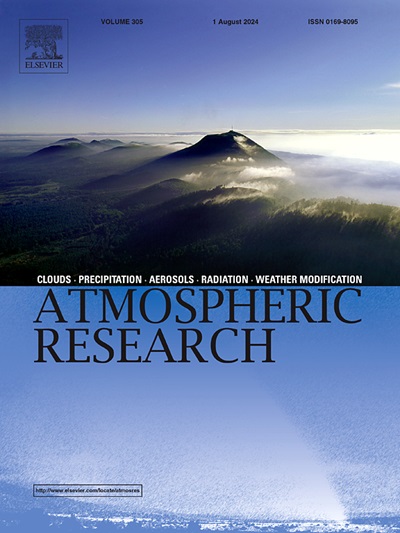Control of combustion related ammonia emissions can be effective in mitigating PM2.5 pollution in two megacities in Sichuan Basin, Southwest China
IF 4.5
2区 地球科学
Q1 METEOROLOGY & ATMOSPHERIC SCIENCES
引用次数: 0
Abstract
The elevated concentration of ammonium (NH4+) in PM2.5 is a significant contributor to haze formation. However, the reduction potential and sources of its precursor ammonia (NH3) remain unclear, particularly in the Sichuan Basin, where limited attention has been given to these issues. Here, daily PM2.5 samples were simultaneously collected from the cities of Chengdu and Chongqing between 1 September to 30 November 2017. The concentration of major water-soluble inorganic ions and the δ15N-NH4+ value in PM2.5 were measured. As a result, no significant difference in NH4+ concentration was observed between Chengdu (4.8 ± 3.4 μg m−3) and Chongqing (4.5 ± 2.7 μg m−3). Although clear differences in the major chemical forms of NH4+ in PM2.5 were identified, the rapid increase in ammonium nitrate (NH4NO3) was a key factor in triggering haze formation in both cities. The reduction of NOx emission proved more effective than NH3 in mitigation aerosol pollution in the short term. However, the decrease in NH4NO3 concentrations was more pronounced, particularly on haze days, when both NH3 and NOx reductions were considered concurrently. The Bayesian Mixing Model (MixSIAR) revealed significant differences in the source-resolved structure of NH4+ between Chengdu and Chongqing. Specifically, combustion and volatile sources accounted for 47.7 % and 52.3 % in Chengdu, while they accounted for 65.1 % and 34.9 % in Chongqing. However, combustion emissions remain a major source of NH4+ in PM2.5 during haze days in both cities, contributing over 65 % of NH4+ concentrations. Based on these results, reducing combustion emissions is an effective strategy for mitigating haze pollution in Chengdu and Chongqing.

求助全文
约1分钟内获得全文
求助全文
来源期刊

Atmospheric Research
地学-气象与大气科学
CiteScore
9.40
自引率
10.90%
发文量
460
审稿时长
47 days
期刊介绍:
The journal publishes scientific papers (research papers, review articles, letters and notes) dealing with the part of the atmosphere where meteorological events occur. Attention is given to all processes extending from the earth surface to the tropopause, but special emphasis continues to be devoted to the physics of clouds, mesoscale meteorology and air pollution, i.e. atmospheric aerosols; microphysical processes; cloud dynamics and thermodynamics; numerical simulation, climatology, climate change and weather modification.
 求助内容:
求助内容: 应助结果提醒方式:
应助结果提醒方式:


